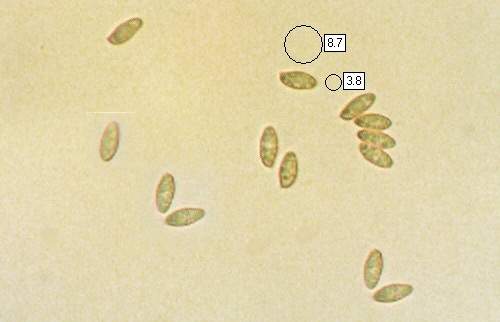Suillus variegatus (Sw.) Richon & Roze - Velvet Bolete
Phylum: Basidiomycota - Class: Agaricomycetes - Order: Boletales - Family: Suillaceae
Distribution - Taxonomic History- Etymology - Identification - Culinary Notes - Reference Sources
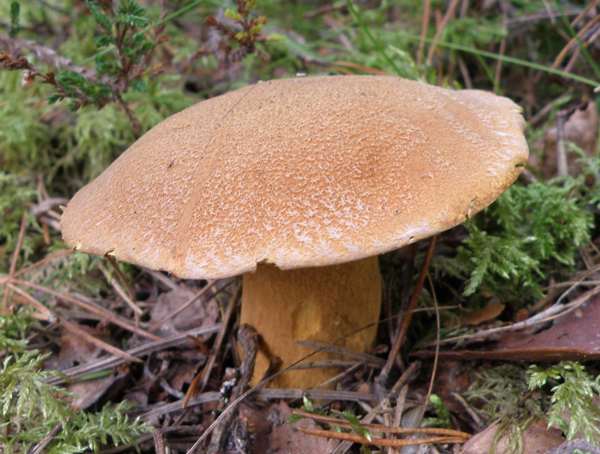
This soft-fleshed bolete is far from common in Britain and Ireland, where it appears under various kinds of pine trees but most often with two-needle pines - for example the Scots Pine Pinus sylvestris - and then usually only in small groups rather than in the swarms that are typical of some of the other pine-forest Suillus species.
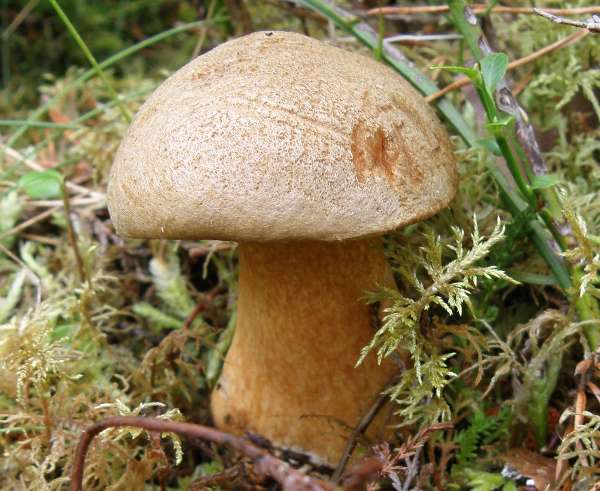
Distribution
Suillus variegatus is an occasional and localised find in acidic heathland areas of Britain and Ireland, always in or beside pine plantations and often among heather. This bolete copes well in colder northern climes, and is more common in Scotland than in southern England or Wales. On mainland Europe the Velvet Bolete (also referred to as the Variegated Bolete in some field guides) is quite common in Scandinavia but increasingly rare further south; its range extends into Asia. This species is also recorded in parts of North America.
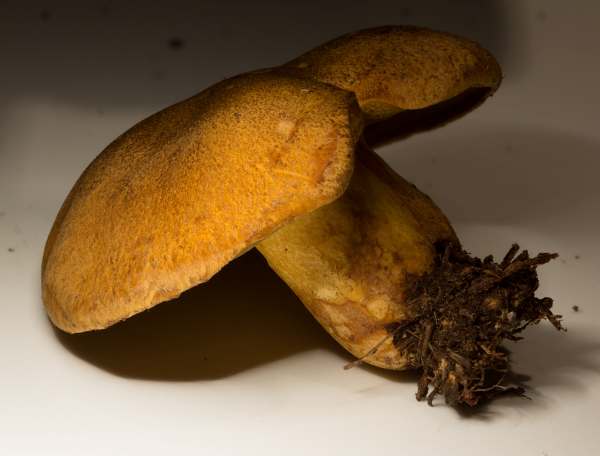
Taxonomic history
When in 1810 Swedish mycologist Olof (Peter) Swartz (1760 - 1818) described this bolete scientifically, he gave it the binomial name Boletus variegatus. In 1888 French mycologists Charles Édouard Richon (1820 - 1893) and Ernest Roze (1833 - 1900) transferred this species to the genus Suillus, establishing its currently-accepted scientific name as Suillus variegatus.
Synonyms of Suillus variegatus include Boletus variegatus Sw., and Ixocomus variegatus (Sw.) Quél.
Etymology
The generic name Suillus means of pigs (swine) and is a reference to the greasy nature of the caps of fungi in this genus, although Suillus variegatus is untypical in not being a particularly slimy mushroom even in wet weather.
The specific epithet variegatus means variegated, but the adjective in the common name Velvet seems even more appropriate.
Identification Guide
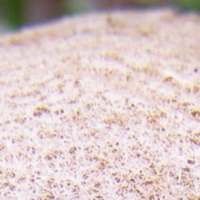 |
CapYellowish ochraceous to yellowish brown, the cap surface is nearly always dry (except in wet weather), finely velvety or finely scaly, the caps grow to between 4 and 10cm in diameter and remain slightly convex. The cap flesh is pale yellow and soft; it blues noticeably above the tube layer when the cap is cut - a distinguishing feature of this otherwise rather dull and undistinguished bolete. |
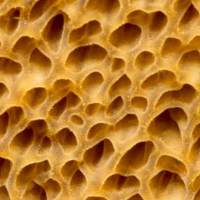 |
Tubes and PoresThe irregular, sometimes compound and slightly angular tubes are shallow and darkish buff to mustard coloured, and they terminate in olivaceous-ochre pores that take on a cinnamon to mustard coloured tinge when fully mature. |
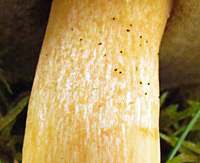 |
StemThe parallel or slightly bulbous stem is straw yellow and has no ring or ring zone. When cut, the pale yellow stem flesh does not change colour significantly. |
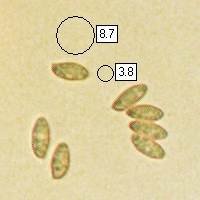 |
SporesFusiform, smooth, 8-11 x 3-4μm. Spore printOchre or sienna-brown. |
Odour/taste |
Odour not distinctive; taste rather acidic. |
Habitat & Ecological role |
Mycorrhizal, found beneath coniferous trees and in particular Scots Pine. |
Season |
July to November in Britain and Ireland. |
Similar species |
Suillus grevillei has a similar cap but there is a distinct ring zone on its stem and its pores are much larger and angular. |
Culinary Notes
Although considered edible, this is not one of the finest of boletes because when cooked it is reported to have a metallic taste and an unpleasant smell. Being uncommon, and rarely occurring in large groups, this mushroom has to be considered of limited culinary interest.
Some people find that Suillus fungi cause them stomach upsets, and so if you do decide to gather Variegated Boletes, Slippery Jacks or any other kind of Suillus mushrooms it is advisable to peel the caps, remove the tube layer, cook them thoroughly, and even then, as with any kind of edible mushroom that you are trying for the first time, have only very small portions until you are sure that you do not have an adverse reaction. (Personally, I don't collect any Suillus species because so many other superior mushrooms fruit over much the same period.)
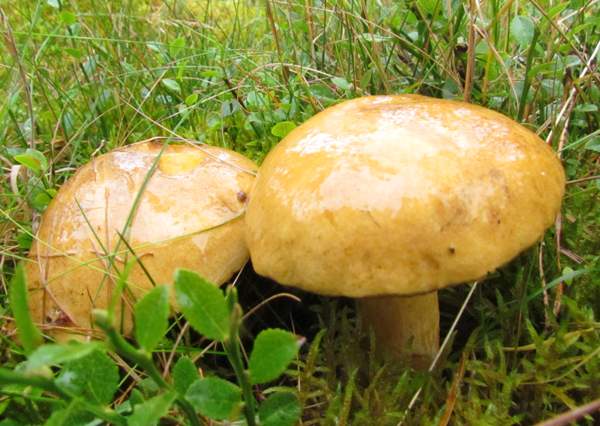
Reference Sources
Fascinated by Fungi, 2nd Edition, Pat O'Reilly 2016, reprinted by Coch-y-bonddu Books in 2022.
British Boletes, with keys to species, Geoffrey Kibby (self published) 3rd Edition 2012
Roy Watling & Hills, A.E. 2005. Boletes and their allies (revised and enlarged edition), – in: Henderson, D.M., Orton, P.D. & Watling, R. [eds]. British Fungus Flora. Agarics and boleti. Vol. 1. Royal Botanic Garden, Edinburgh.
BMS List of English Names for Fungi
Dictionary of the Fungi; Paul M. Kirk, Paul F. Cannon, David W. Minter and J. A. Stalpers; CABI, 2008
Taxonomic history and synonym information on these pages is drawn from many sources but in particular from the British Mycological Society's GB Checklist of Fungi.
Acknowledgements
This page includes pictures kindly contributed by David Kelly.
Fascinated by Fungi. Back by popular demand, Pat O'Reilly's best-selling 450-page hardback book is available now. The latest second edition was republished with a sparkling new cover design in September 2022 by Coch-y-Bonddu Books. Full details and copies are available from the publisher's online bookshop...
